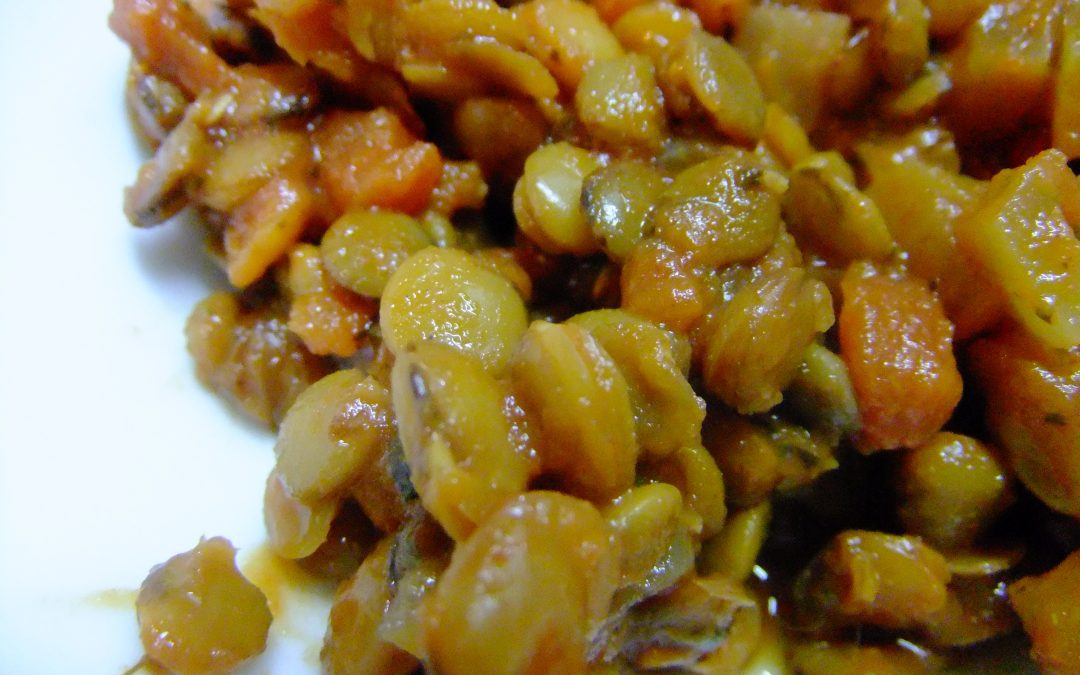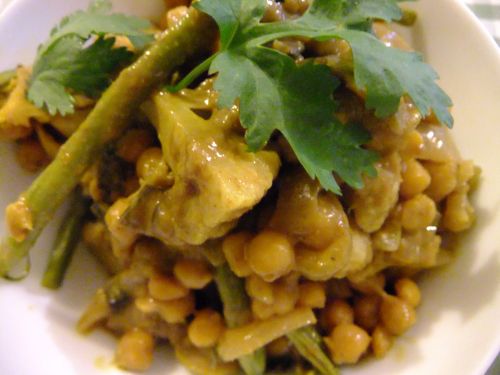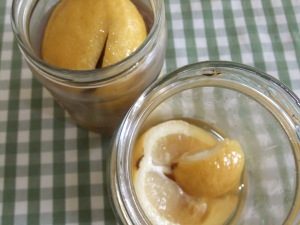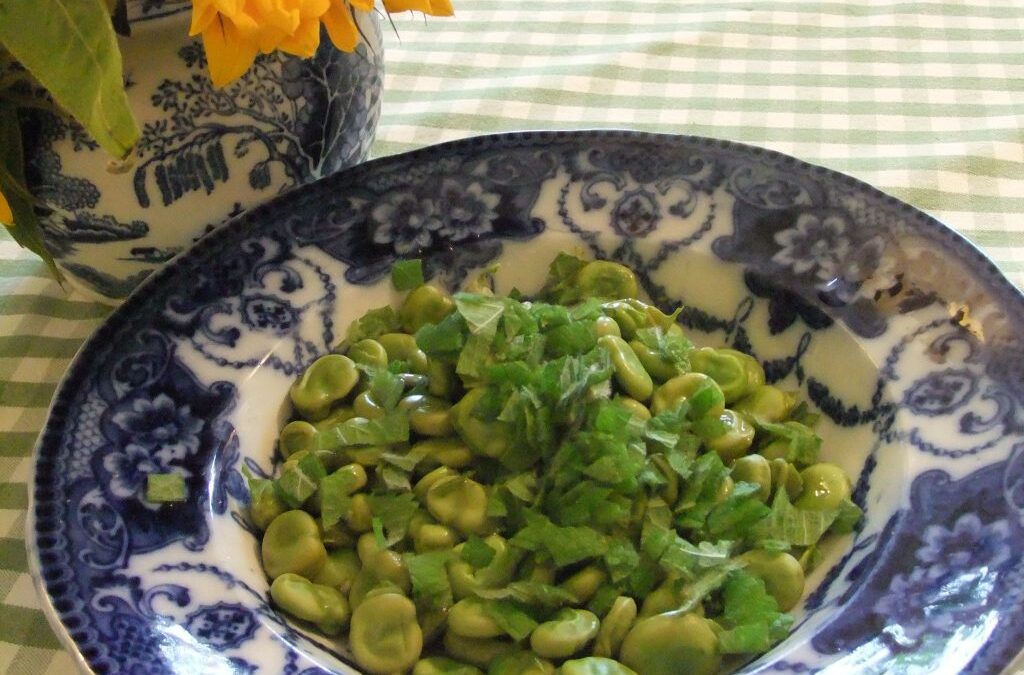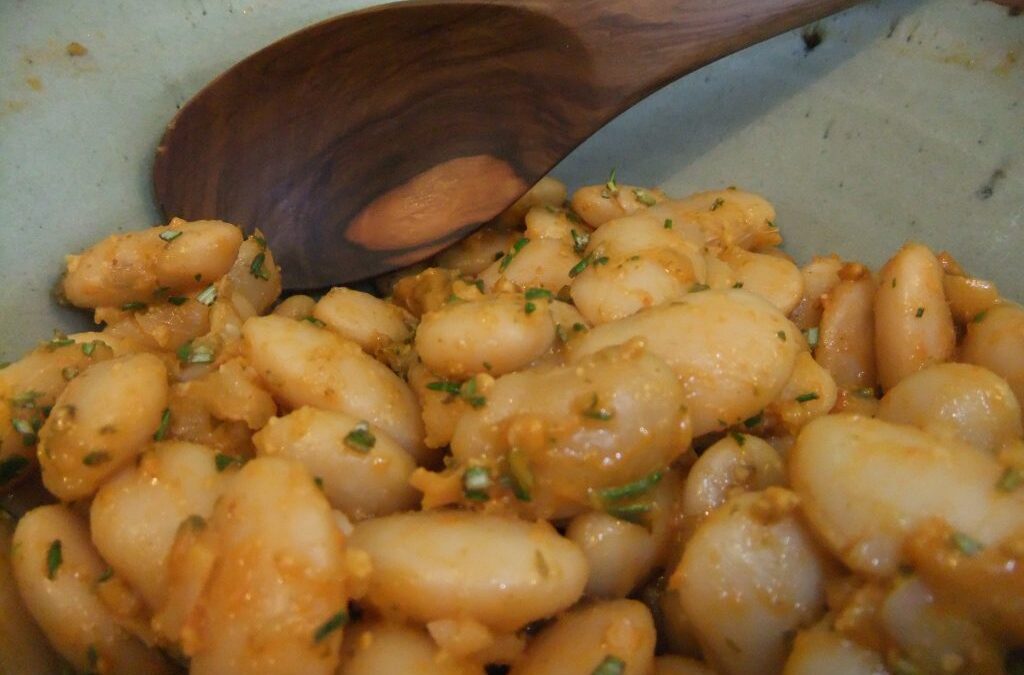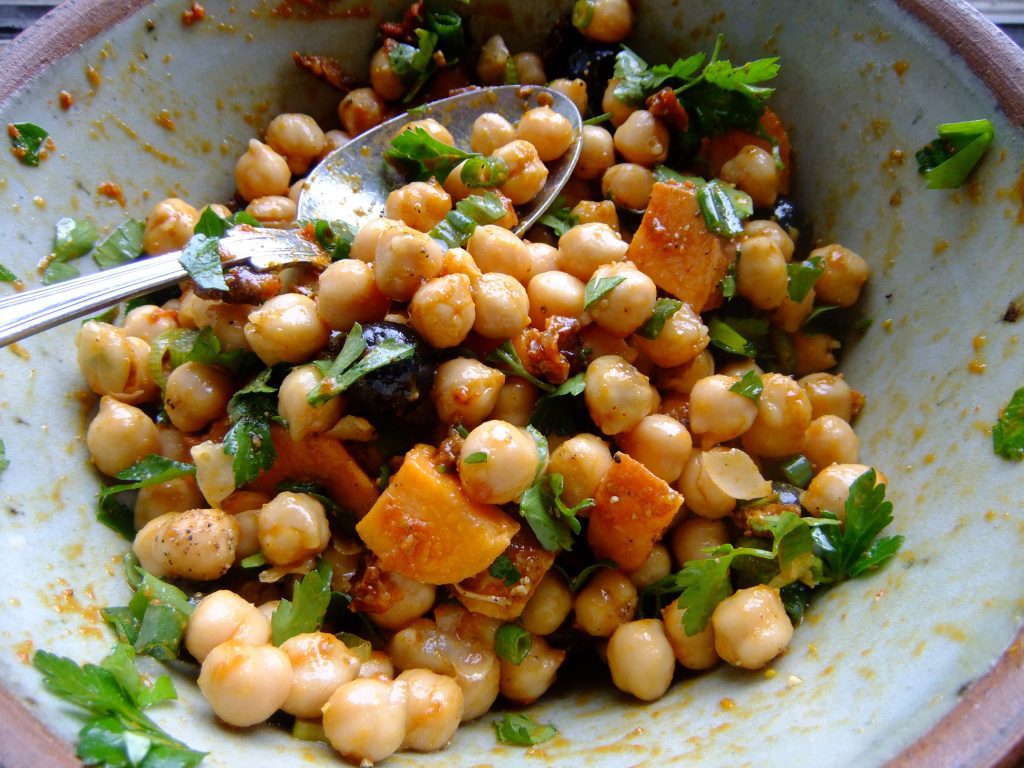
Dec 28, 2013 | Anna's Best Recipes, Main courses
This dish is loved by all who have tried it, including resolute carnivores and children. The alcohol is boiled off 95% during the cooking so the amount that’s left is negligible. Make loads and frieze in batches for delicious, quick pasta dinners. To make this a balanced meal add some broccoli florets into the sauce when its cooked and bubble, covered for a further 5 minutes until done. Alternatively, serve with a green salad.
For 2 (with a little left over)
1 dsp extra virgin olive oil or virgin coconut oil
1 dsp water
1 large onion, peeled and chopped
1 large garlic clove, crushed.
1 heaped teaspoon dried basil
250 ml sieved tomatoes (passata) or ½-1 400g can of chopped tomatoes
125g continental “brown” or “green” lentils
1 tbs tomato puree
275ml dry cider, red wine or unsweetened apple juice.
225ml boiling water
1 gluten-free vegetable stock cube or a level tsp of Kallo/Vecon vegetable bouillon powder and 50ml of boiling water in which to dissolve it
Freshly ground black pepper
150g brown rice/millet spaghetti or pasta shapes, buckwheat pasta, or (if you want to eat gluten, wholewheat spaghetti).
Optional extra (for dairy-eaters): grated parmesan cheese to serve
1. Put the onions, oil and dessertspoonful water in a large heavy bottomed saucepan, cover and sweat on a medium heat until the onions are softened but not brown.
2. Add the garlic, basil, tomatoes, lentils, tomato puree, wine/cider and 200ml of boiling water.
3. Bring to the boil, cover with a lid, and bubble for around 25-33 minutes until the lentils are tender.
4. Now make up the veg stock cubs or veg bouillon powder with 50ml of boiling water and add to the pot, stirring well to combine. It’s important NOT to add the stock cube/bouillon until the lentils are tender as the salt content would delay cooking of the lentils and make them leathery.
5. Season with pepper and serve with the pasta.
Why this is good for you:
Lentils are high in soluble fibre which feeds beneficial bacteria in the gut which help prevent digestive problems such as constipation, diarrhoea. Lentils contain protein which helps balance your blood sugar and stabilise energy too. It’s important to boil lentils for at least 15 minutes, to make them digestible. Lentils are rich in magnesium. People who are short of magnesium are more likely to feel stress, insomnia or suffer from poor skin or digestive issues. Sugar, excessive salt, alcohol, stress, white flour and coffee deplete magnesium. Increasing the lentil sauce, having some green veg on the side, and decreasing the pasta quantities means you are getting a higher amount of protein and nutrients than people normally do in a pasta meal.
Wheat binds (inactivates) N-acetyl glucosamine, a substances important for day-to-day repair and maintenance of your intestines. That’s why its not always the best choice of pasta type (buckwheat, rice and millet make better quality pastas). Wheat also binds (inactivates) iron in your food, making it difficult to absorb. (2019 note: recent research and filming of the inside of healthy intestine during gluten exposure shows that gluten damages the barrier which prevents undigested food and bacterial by-products from entering your bloodstream. Yes thats correct, gluten causes transient gut damage for ALL people, not just those sensitive to gluten). Focusing instead on other grains like oats, brown rice and millet gives your digestive system a break. A cheaper alternative to non-wheat pasta is quinoa grains or whole millet grains, which I show you how to cook in my post on millet. Even reducing wheat to once in your day could still make a fantastic difference to your vitality.

Nov 27, 2013 | Anna's Best Recipes, Sides, starters, soups & snacks
I love this warming, filling soup that’s rich in protein. A complete meal with a little green salad on the side (or some spinach leaves or leftover cooked greens stirred in at the end) it makes a complete meal. I usually freeze the leftovers in individual serving sizes to take to work on a cold, frosty day.
For 4 (or 2 with generous leftovers)
1 large onion, chopped
2 sticks celery, sliced thinly
2 cloves garlic, chopped roughly
500ml carton of passata (sieved tomatoes) or a 400g can tomatoes chopped or whole
750ml water or leftover vegetable cooking water (e.g. from steaming veg)
175g red lentils
1 teaspoon additive-free vegetable stock powder. Dr Coys Organic Vegetable Bouillon is best and suitable for SC diet. From health stores.
3 heaped tbsp freshly chopped or frozen chopped parsley
Freshly ground black pepper
1-2 tbsp extra virgin olive oil
Optional extras (health and flavour boosters) to add to the :
1 tablespoon finely grated fresh ginger + heaped teaspoon turmeric powder added during cooking
1. Put the onion, celery, garlic, tomatoes and water into a large saucepan. Add the lentils afterwards making sure they are submerged in liquid. Lentils tend to stick to the bottom so I don’t stir this until they are cooked.
2. Boil for 20 mins/until lentils are soft. Only stir the lentils gently at the very top if they are stuck together, otherwise leave them alone.
3. Mix the veg stock powder into a little water and add to the soup AFTER the the lentils are cooked otherwise the salt will make the lentils take forever to cook.
4. If you like a smoothish soup then add the parsley and olive oil and blitz with a stick blender or in a food processor.
Variation:
Add 2 sliced carrots along with the celery and onion.
Health boosting tip:
Soak your lentils overnight in cold water. This starts them sprouting, which makes them even more digestible. I don’t bother unless I have extra time to spare.
Why this soup is good for you:
Lentils are rich in magnesium which is Nature’s tranquiliser, helping reduce stress. They and onions are also rich in soluble fibre, which feeds beneficial bacteria in your gut. “Good” bacteria help produce digestive enzymes to help you digest your food. They also generate butyrate, which aids daily repair of your bowel – good news for your skin, your hair, your digestion, even your mood. Lentils, like all beans and pulses, need to be either sprouted or boiled for at least 10 minutes to make them digestible. However, lentils, split peas and all sprouted or fermented versions (eg bean sprouts, tofu) are the easiest of the beans/pulses to digest because they are lower in protease inhibitors. Protease inhibitors are substances that inhibit digestion and are found to some extent in all plant foods – vegetables, nuts, seeds, beans. Remember that beans, seeds and nuts are designed to be eaten by an animal, pass through the gut undigested, and then be deposited by the animal in a nice blob of “fertiliser” to grow into a new plant! Protease inhibitors are found in the skins of beans and pulses and are neutralised by soaking in cold water for at least 12 hours and then sprouting or fermenting or boiling hard for 10 minutes. Sieved tomatoes (passata) are rich in lycopene and beta carotene – fantastic for eye health and getting heathier looking skin. The extra virgin olive oil helps your body absorb the beta carotene.

Nov 8, 2013 | Anna's Best Recipes, Main courses
This recipe comes from Food Glorious Food, by Patrick Holford and Fiona McDonald Joyce. I did adapt the quantities slightly, increasing the chickpeas, giving more protein to keep you fuller for longer. We also used curry powder instead of the curry paste recommended and it was still lovely. It isn’t hot. The curry is really a meal in itself without needing accompaniments though we did roast some pumpkin wedges. We coated them in tomato puree and spices according to Patrick and Fiona’s recipe for Indian Spiced butternut squash, also from the same book. Don’t be tempted to leave out the coconut oil – extra (healthy) oils are very important for keeping you fuller longer when you eat animal-free meals.
For 3 big eaters, with a little left for lunch next day:
Remember to go to my “larder & shopping” section for unusual ingredients.
2 tbsp extra virgin coconut oil
2 heaped tbs Thai curry paste or Sharwoods Madras curry powder (or any curry powder – make sure to check labels for gluten if relevant)
2 large onions, sliced
2/3 large cauliflower, broken into bite size florets
2 x 400g tins chickpeas or 220g dried chickpeas, soaked overnight, then boiled till tender to yield 440g when cooked and drained (about 2 mugs)
400ml can full fat coconut milk
100ml hot vegetable stock (use 1/4 teaspoon Marigold bouillon or 1/2 a Kallo vegetable stock cube to make this up)
1 tbs tamari sauce
250g fine green beans (or you could use runner beans, cut into 2″ lengths)
Optional: Handful of coriander, torn or roughly chopped
- Put the oil, curry powder and onions in a large heavy-bottomed saucepan or Le Creuset type pot on a medium heat, mix around, cover with a lid or plate and sweat until softened and translucent – this usually takes around 10 minutes. Add the cauliflower and chickpeas to the pan and stir to coat them in the other ingredients.
- Pour in the coconut milk, stock and tamari, and stir. Bring to the boil, then cover and simmer over a gentle heat until the cauliflower is nearly done. I found this took about 15 minutes.
- Stir in the green beans, cover and cook for another 5 minutes or so until they’re tender. Scatter with the coriander leaves (if using) before serving.
To serve: You can eat this curry on its own, or serve with brown rice or with the gorgeous Indian spiced butternut squash recipe I will be posting shortly.
Why this recipe is good for you:
Thousands of clinical studies show that a wide range of spices have profoundly anti-inflammatory properties, helping soothe joints, digestive system and delay ageing. Sometimes people complain that Indian takeaways upset them, thinking it is the spices. It is more likely to be the heavy use of low quality refined oils that promote inflammation and play havoc with their stomachs!! The chickpeas in this recipe are a good source of protein and also of soluble fibre, that feeds beneficial bacteria in the gut to help your health. Chickpeas, like all beans and pulses, need to be soaked and boiled thoroughl (or tinned!) to make them digestible. Virgin coconut oil and full fat coconut milk contain important medium chain triglyceride fats that feed your brain. MCTs also used by the body directly to make energy, rather than being stored as fat – good news if you want to be slim and trim. People with ME/chronic fatigue syndrome particularly benefit from coconut oil in their diets. Cauliflower is a sulphurophane vegetable, helping your liver detoxify used-up hormones and other waste products. Substituting beans/pulses for meat/cheese in some of your meals every week is a good way of helping your kidney function and supporting joint and bone health. Fresh coriander binds to heavy metals such as mercury and aluminium in the gut, helping their safe elimination. “Silver” fillings give off toxic mercury while “normal” tea is high in aluminium, a known neurotoxin. Helping your body eliminate these is good news.

Sep 30, 2013 | Anna's Best Recipes, Main courses
Now the autumn chills are setting in this is a lovely slow-cooked recipe to warm you up. It’s richly-flavoured but really mild. It’s ideal if you are cooking one meal to please meat eaters and people who want to eat less meat at the same time. People can avoid the meat part of the dish and bulk up on extra chickpeas and vegetables and have some delicious fluffy cooked millet grains on the side. Using meat on the bone makes this really flavourful. I usually serve this with some sort of steamed green vegetable (like green beans or dark green cabbage) or a green salad. To stretch things out a bit and save money adding cooked millet to soak up the juices is a winner. If you are new to super-nutritious and super-inexpensive millet, check out my post on how to cook it https://annacollins.ie/how-to-cook-millet-i-cant-believe-its-not-couscous/
For 2:
2 mugs (around 450ml) of leftover veg or chickpea cooking water, or plain filtered water
300g small onions or large shallots (large onions will do if you cant get small ones)
1 mug home-cooked chickpeas (reserve the liquid) or a 400g can of chickpeas
2 large cloves garlic, peeled and roughly quartered or sliced
½ a medium size preserved lemon*, deseeded and roughly cut up into 8 pieces – at a pinch you could use ½ a fresh lemon (skin and pith only). Buy ready-made, or use the easy recipe below and leave to mature for at least 2 weeks before using.
2 chicken breasts on the bone or chicken legs (organic if possible)
1 heaped teaspoon ras el hanout*(see simple recipe below, or buy ready-made)
For unusual ingredients see “larder & shopping” section of this blog
1. Put a heavy bottomed saucepan or cast iron pot on a medium heat to warm with the 2 mugfuls of stock or water. Put the chicken legs or breasts at the bottom of the pot. Peel and add the onions, ras al hanout, chickpeas, preserved lemon and garlic. Put the lid on, give everything a gentle shake to mix everything up. You want the water to almost cover everything.
2. Simmer gently for 1½ to 2 hours (stirring occasionally to coat everything in the liquid and spices) until the onions are translucent and the chicken is falling off the bone.
Money-saving health-boosting tip:
Serve this with cooked millet. Cooked millet wholegrains are a healthy replacement for couscous, but very similar in appearance and texture. For instructions on how to cook, click the “grains” section in the tag cloud on the left of this blog, or search for “how to cook millet” in the search box.
How to make ras el hanout
Traditionally, ras el hanout contained a blend of 40 different spices. This streamlined version includes many of the main spices of the traditional mixture. Keep this mix in an airtight glass jar in a dark place to preserve the aromas for many months. If you like this spice mix, you will use it again and again as tagine stews are really simple to make. If you own a coffee or spice grinder, you can grind your own spices for extra flavour.
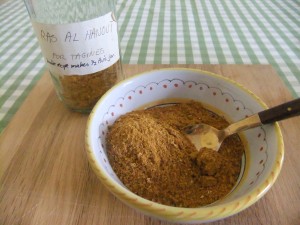
Ras al hanout
Makes ½ a medium size jar of ras el hanout:
2 teaspoon ground cumin
2 teaspoon ground ginger
3 teaspoon turmeric
1½ teaspoon ground cinnamon
1½ teaspoon freshly ground black pepper
1 teaspoon ground white pepper
1 teaspoon ground coriander seeds
1 teaspoon cayenne
1 teaspoon ground allspice
1 teaspoon ground nutmeg
½ teaspoon ground cloves
Instructions: Mix spices together. Store airtight in a dark place to preserve the potency of the spices.
How to make preserved Lemons
These have a distinctive flavour its hard to replicate. These are easily made if you cant find a local Halal shop near you or don’t live near Fallon & Byrne. They take at least 2 weeks before they are ready and will keep for a year. I usually keep mine in the fridge but its not absolutely necessary.  These take about 2 weeks to mature.
These take about 2 weeks to mature.
A carton of Atlantic sea salt or Himalayan (pink) salt
10 unwaxed lemons, organic if possible, scrubbed well
A large glass jar with lid
1. Standing a lemon on one end make a cut down the centre with a sharp knife until you have cut 2/3 of the way down.
2. Now turn the lemon upside down and rotate it 90 degrees. Make another cut at right angles to the original cut, also 2/3 of the way down the fruit.
3. Pack the slits with salt and place in the jar. Continue until the lemons are all packed tightly in the jar.
4. Over the next week or two you will see liquid coming out of the lemons. This is normal. When using a lemon for cooking you will need to discard the seeds and rinse off the salty liquid. After 2 weeks the lemons are ready to use.
Why this is good for you:
Spices in the ras al hanout are a fantastic source of antioxidants to help your health. Spices help reduce inflammation in the digestive system. Research shows that spices also boost liver function and help keep your skin clear and young-looking. Traditionally, Moroccan dishes are cooked on a low flame for a long time. Modern, cheffy recipes telling you to brown the meat are neither as authentic nor as healthy as the traditional ways. Cooking foods at low temperature (stewing) rather than at high temperature (frying, roasting or grilling) is better because low temperatures produce far fewer damaging free radicals than high temperature cooking. Fewer free radicals and more antioxidants from the spices means slowing down the ageing process, reducing the risk of chronic or life-threatening disease, and helping your heart. Stewing meat on the bone releases substances into the food that help support collagen production. This helps your digestive system repair itself and also helps maintain good firm skin and bones in later life.

Aug 23, 2013 | Anna's Best Recipes, Sides, starters, soups & snacks
This is my recreation of a delicious little dish I once ate in a simple whitewashed cafe in Cadaques in Northern Spain. Washed down with a rustic red, it was heaven on a plate. If you want it to taste it at its most delicious slip each bean, once cooked, out of its leathery skin. The skins of large broad beans have a slightly bitter taste which most people don’t like. This is fiddly so do this when you have a bit of time, for a special meal, or at the weekend! If you are lucky enough to get baby broad beans (not much more than 1cm long), you can leave them in the skins as they are not bitter. This is the nicest eaten lukewarm, in my opinion. You can make it in advance but do allow it to come to room temperature before serving, or warm it very gently in a pan until lukewarm.
For 2 as a starter, with leftovers
1kg fresh broad beans in their pods OR 350g, frozen (see larder for stockists)
1 heaped tbsp chopped fresh mint (or more, to taste)
Extra virgin olive oil to drizzle
A pinch of Himalayan or Atlantic sea salt (see larder)
Freshly ground black pepper
- If you have fresh beans, pod them. If the beans are large, steam for around 5 minutes. If they are baby beans, steam for around 3. You want them to be softened but not overcooked.
- Drain the beans, and as soon as they have cooled down enough to handle. Slip each bean out of its leathery skin and place in a bowl.
- Drizzle on enough extra virgin olive oil to coat the beans generously, sprinkle on a pinch of salt, and a few good grinds of black pepper.
- When the beans have cooled to lukewarm, add the mint (if you add it when hot, it will turn brown, which you don’t want). Taste, and adjust the amount of mint and seasoning. Eat a small portion as a starter, or a larger one as a main with a large mixed salad and maybe some cooked millet mixed with pesto.
Why this is good for you:
Beans and pulses are a rich source of soluble fibre, which helps nourish healthy bacteria in the gut. These bacteria make butyric acid that repairs the bowel and helps prevent abnormal growths. They also are important for detoxification of hormones, chemicals, and naturally-produced toxins – all good news for skin, energy levels, and healthy digestion. Beans are also rich in magnesium which helps keep you relaxed as well as supports healthy bowel function. Mint has soothing, anti-spasmodic properties in the digestive system. Extra virgin olive oil is rich in vitamin E and health-enhancing polyphenols. The Italians always say that raw olive oil gives you smooth skin and they are right. Olive oil also helps weight management and delays the effects of ageing. If you have difficulty digesting beans then this is a sign that you may need to pep up your gallbladder function or address a possible imbalance of bacteria in the gut.

Aug 6, 2013 | Anna's Best Recipes, Main courses, Sides, starters, soups & snacks
This is something delicious I make when I’m in a hurry and need some good quality protein. It works well with a simple mixed salad on the side to make a balanced meal. You could also substitute it for potatoes alongside meat or white fish. I usually make lots so we can use the leftovers for packed lunches.
Serves 4 (or 2 with leftovers)
1 heaped dsp sun-dried tomato pesto
One of the following fresh herbs if you have them, chopped:
Rosemary leaves: 1 tsp/oregano 1 tbs/parsley 1 tbs
2 dsp lemon juice
2 tins or mugs of cooked butter beans, drained
1 clove garlic, crushed (optional)
Black pepper
- Mix the lemon juice, pesto, garlic, and herbs together in a bowl.
- Add butterbeans, a few good grinds of black pepper, and mix well. Taste and if you feel like it, add more lemon juice, pesto, or pepper.
- Eat with a large mixed salad such as my “basic mixed salad”.
Why this recipe is good for you:
Beans and pulses are rich in soluble fibre, a type of fibre that feeds friendly bacteria in your gut. Friendly bacteria are important for your immune system, helping regulate it and prevent allergies such as eczema and inflammatory diseases such as colitis. These good bacteria also help your body clear toxins. Toxins we are commonly exposed to include used-up hormones (eg estrogens, testosterone), old medications, and chemicals (eg toxic nitrites from processed meat, petrochemicals from toiletries, and petrol fumes). So if you want to have good detoxification, clear skin, and tune up your digestion, fostering your good gut bacteria is one of the keys. Rosemary, oregano, lemon juice, and garlic are also great helpers for the liver, also promoting fast efficient clearance of toxins.

Jul 30, 2013 | Anna's Best Recipes, Breakfasts & smoothies, Main courses
This was one of my favorite breakfasts on a weekday when I didn’t have that much time and I didn’t have to be gluten-free. Now that I know I’m coeliac I use the gluten-free alternatives mentioned below. Cooking in the oven makes it handy, because (unlike grilling) you don’t have to watch it every minute. These Taifun brand sausages are vegan and contain 11% protein so are great for keeping you satisfied for longer. Check out my “larder” on the menu for where to buy these and other unusual foods. Make sure you get the “grill herb sausages” though, they are the nicest. These sausages are not gluten-free as they contain soya sauce and small amounts of oats (which can be contaminated with gluten grains). For the gluten-free option, see the Taifun Basil Tofu option below in the recipe. You could also eat this for a light lunch or dinner. All the Taifun products keep for ages in the fridge.
For 1 person:
1 tomato
1 medium courgette
2 Taifun grill herb sausages (these contain gluten, for gluten-free- slice 1/2 a block of Taifun Basil Tofu or Tofu Rosso into 3 thick slices instead)
Extra virgin olive oil
1 tsp dried oregano or 1 tbsp chopped fresh oregano
Freshly ground black pepper
- Put the sausages on a baking sheet in the oven and switch on to 170C (or 150C in a fan oven). Wash the courgette and tomato. Halve the tomato and slice the courgette lengthways – sliced 1/2-2/3 cm thick is just about right, I think.
- Leave the sausages to cook in the heating-up oven for around 25-30 minutes while you shower or generally get ready for the day.
- After 25 mins remove the baking sheet from the oven. The sausages or basil tofu should be swollen up and slightly coloured now. Add the courgette slices and tomato halves and pop into the oven for another 5 minutes. This way the veggies will be hot but not mushy. They will retain lots of nutrients this way.
- Arrange everything on a plate, drizzle a teaspoon of olive oil over the courgette slices, sprinkle the oregano over the tomatoes, and add a few good grinds of black pepper. Why this recipe is good for you:
The oregano and tomatoes in this recipe are packed with antioxidants that help your health – by lowering inflammation, delaying ageing, and (in the case of oregano) inhibiting the growth of pathogenic (“bad”) organisms in the gut. Research suggests that unfermented soya products (eg soya milk, textured soya vegetable protein) are not likely to be helpful to health whereas traditional products that are fermented (fermented tofu, tempeh, miso, natto) have lots of evidence to support usefulness in adult hormonal health, especially in relation to breasts and prostate. Fermented soya products are an excellent source of high-quality protein to keep you feeling fuller for longer. If you have autoimmune conditions though, you may need to avoid soya products.

Jul 12, 2013 | Anna's Best Recipes, Main courses, Sides, starters, soups & snacks
I love this beany salad which I have adapted from a recipe by Tamasin Day-Lewis. We eat it lukewarm or at room temperature as the fancy takes us. It’s also lovely made with butter beans. The tomatoes are optional, some people prefer the dish without. Boiling the beans with herbs and vegetables give the most amazing flavour to the finished dish. But if you can’t be bothered, its still worth making – just omit the onion, celery, rosemary and extra sprig of sage.
As a main meal you could serve this with a large leafy salad (or lightly steamed broccoli florets drizzled with lemon juice and olive oil) and maybe some quinoa (nice with basil pesto and a crushed clove of garlic stirred in while its still hot).
Feeds 4 as an accompaniment, 2 as a main course:
225g dried cannelini beans, soaked in filtered water overnight (or soak in boiling water for 1 hour)
Optinonal: 1 sprig rosemary (about the length of your hand), destalked, chopped fine
2-3 large sprigs sage (around the length of your hand also)
1 medium onion, peeled and cut in half
2 celery stalks
3 large garlic cloves
5 tbsp virgin olive oil
3 fresh or tinned tomatoes, chopped (if you are a perfectionist you can skin them and remove the seeds too – I never bother)
Freshly ground black pepper
A pinch of Himalayan salt or Atlantic sea salt, not “table salt”
1. Cook the beans in plenty of water with a sprig each of rosemary and sage, the onion, celery and 1 clove of garlic until just about tender. Reserving the cooking water, drain the beans and discard everything else.
2. Into a large heavy bottomed saucepan or frying pan on a gentle heat put your 1-2 remaining sprigs of sage, the 2 cloves of garlic and bash them about with a wooden spoon for a minute so they get a bit squashed.
3. Add 2 tablespoons of the olive oil, cover with a lid (or a large plate) and cook a couple of minutes until the garlic has started to sizzle.
4. Add tomatoes, beans and a further 2 tablespoons of olive oil. Turn everything in the oil, then pour over enough of the bean stock to cover the base of the pan. Cook until most (but not all) of the liquid has evaporated.
Why this is good for you:
Extra virgin olive oil, especially raw, is a great source of vitamin E which is great for moisturising your whole body, controlling allergies and is anti-inflammatory. Beans are a great high protein alternative to meat, fish, eggs or dairy products. They contain magnesium which has a calming effect, as well as helping keep the skin clear by enhancing liver function. Herbs like sage and rosemary are antioxidant, anti-ageing and naturally anti-inflammatory. They also encourage growth of friendly gut micro-organisms.
Table salt is an industrial product which contains added aluminium (dessicant) to stop it absorbing moisture. This is toxic. Himalayan salt is the cleanest salt and contains trace minerals. Its “clean” because it came from ancient seas where plastics and other man made contaminants were not present.

Jul 12, 2013 | Anna's Best Recipes, Main courses, Sides, starters, soups & snacks
This is the simplest thing in the world to make and is greatly piled on top of a mixed, dressed, leafy salad. If you are in a hurry, serve with a handful of rockets, another cherry tomato, and a drizzle of virgin oil-based dressing. We often make up a big bowl of this at a weekend and take the leftovers to work. If you are an extra hungry person, you could add extra carbs in the form of a baked sweet potato, gluten-free wholemeal bread, or (if you eat gluten) brown pitta or 100% rye bread.
To serve 3-4:
2 cans or (even better) mugs of home-cooked chickpeas, drained
2 DSP extra virgin olive oil
1 rounded DSP sundried tomato pesto
1 DSP lemon juice
1-2 cloves garlic, crushed
2 tbsp chopped fresh mint, oregano, or parsley or 1 DSP chopped rosemary leaves
Half a red onion, finely chopped (optional)
Freshly ground black pepper
A pinch of Himalayan or Atlantic sea salt
- In a bowl, mix the oil, pesto, lemon juice, garlic, herbs, salt, and a good grind of black pepper together.
- Add chickpeas (and onion if using) and mix well. If you have time, let it sit for half an hour or so to let the flavours amalgamate.
Dietary note:
Fresh herbs and raw virgin olive oil are fantastic sources of antioxidants to keep us healthy. Fresh herbs are powerfully anti-inflammatory, anti-ageing, and help soothe an inflamed digestive system. Home-cooked is best when it comes to pulses but there’s still a lot to recommend tinned chickpeas. Pulses are rich in soluble fibre that feeds good gut bacteria for digestive wellness, hormone balance, and good skin. They also contain magnesium, one of Nature’s most soothing minerals, which we need to eat every day. Pulses like chickpeas are also a source of high-quality protein.

Jul 4, 2013 | Anna's Best Recipes, Cook-in sauces, Dressings, rubs, spreads, sauces & more, Main courses
We ate this last weekend after arriving back from a few days away, desperate to get away from bland food. This is a beautiful, aromatic cook-in sauce for vegetables, white fish or lean meat. People always ask for the recipe when I serve it up. It is equally nice with fish, chickpeas, or chicken. You could also use it to reheat leftover cooked lamb or beef or as a cook-in sauce for peeled prawns. It stores well in the freezer so you could make a large batch, freeze in individual portions, and thaw as needed. this amount of sauce is enough for 4 people, or 2 with leftover sauce to put in the freezer.
3 medium onions
3cm piece fresh ginger
2 large fat cloves garlic (optional)
1 tbsp virgin coconut oil (or olive oil if you can’t get coconut)
1 rounded tsp ground coriander
1 level tsp ground cardamom
1/2 level tsp ground cloves
1 level tsp ground cinnamon
1 rounded tsp turmeric
1/3–½ level tsp chilli powder (optional – avoid if you don’t like heat!)
1 x 65ml tin coconut milk (or 60g creamed coconut + 300ml/1¼ cups boiling water)
300ml/1¼ cups passata (sieved tomatoes) or 1 tin tomatoes, liquidized
1 tbsp chopped fresh coriander
Pepper
A food processor/liquidiser
1. Finely dice the onion, grate the ginger and crush the garlic. Place in a saucepan with the coconut oil or olive oil and 1 tbsp water and sweat them with the lid on over a low heat until the onion begins to soften/go translucent.
2. Add the spices and sweat for a few more minutes.
3. If using creamed coconut, dissolve it in the boiling water and place it in a food processor. If using coconut milk place in the processor with around 200ml water. Add two-thirds of the onion mixture and process until smooth.
4. Put the processed mixture back into the pan and add the passata and fresh coriander. Simmer for 5 mins, then season to taste with pepper.
5. Freeze in containers ready for future use or use for cooking any of the ideas below.
6. Serve with brown rice.
Cook-in ideas (just heat sauce in a heavy-bottomed saucepan to prevent burning, add your ingredients to be cooked, then cover with a lid):
- Fish & veg: Allow 100-120g white fish (skinned and cut into 2.5cm cubes) and 2 cups of broccoli florets or thawed/fresh peas per person. If using broccoli, cook it in the sauce until almost done, then add the fish, which only takes a few minutes. If using peas, you can add the fish and peas at the same time.
- Chicken & veg: Allow 100g chicken fillet (cut in 1cm slices or 2cm cubes) plus 2 cups sliced runner beans or broccoli florets per person. Heat the sauce, add everything else, cover with a lid and cook till done, stirring occasionally (around 10 minutes).
- Chickpeas & veg: Allow 1 cup of cooked drained chickpeas plus 2 cups green veg (eg. broccoli florets or green beans) per person. Throw the whole lot into the simmering sauce, cover with a lid and cook for around 8 minutes until the vegetables are softened but not overcooked.
Why this is good for you:
Research shows that all spices have anti-aging, antioxidant, health-boosting properties. Onions and garlic are great sources of soluble fibre, which feeds the helpful gut bacteria needed for proper digestion, mental clarity, and clear skin. Soluble fibre also binds to natural and man-made toxins (such as chemicals, used-up hormones, and medications) in your digestive system, ensuring that they exit the body quickly and as safely as possible.
